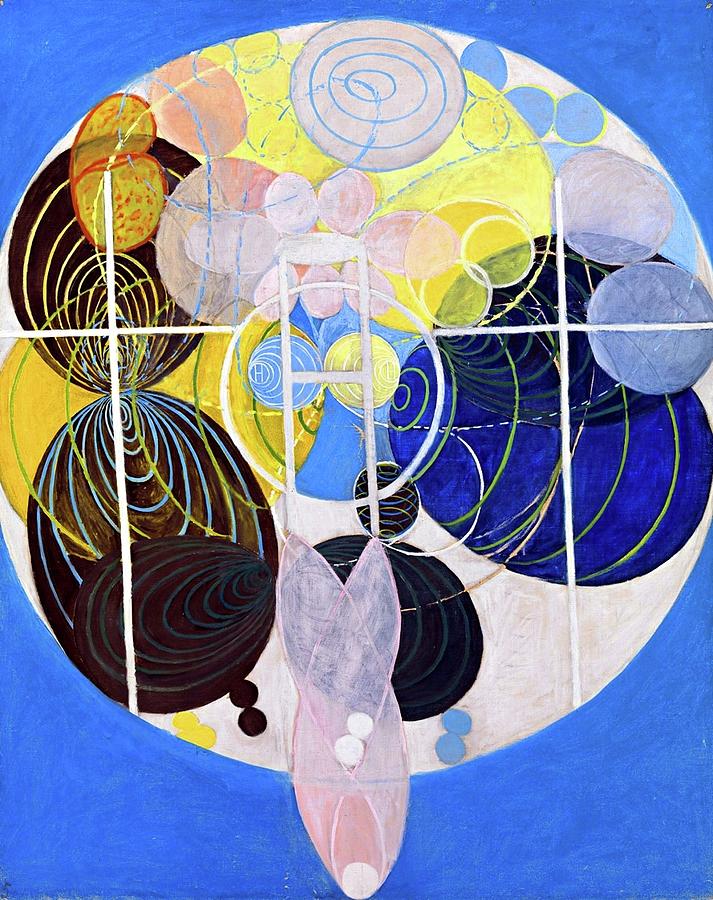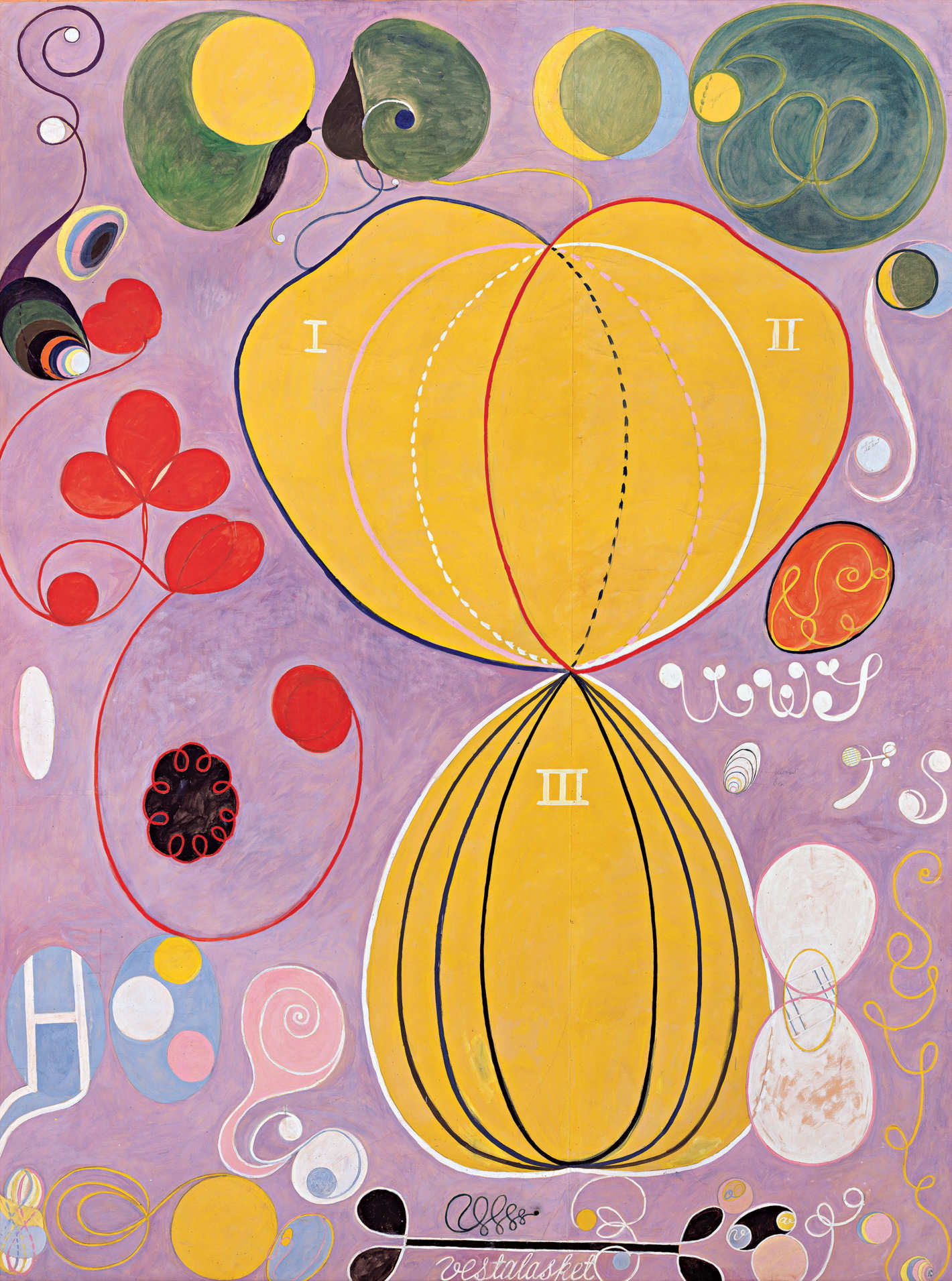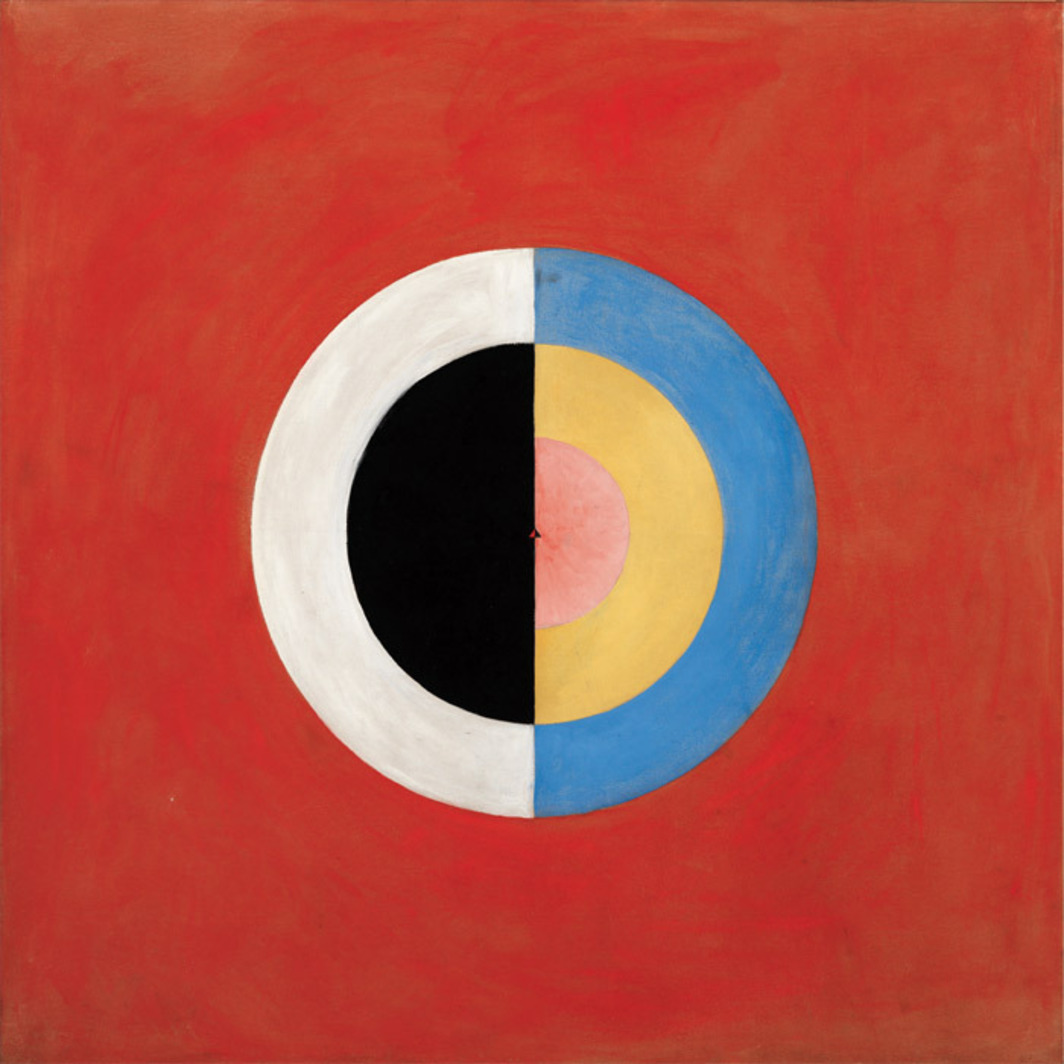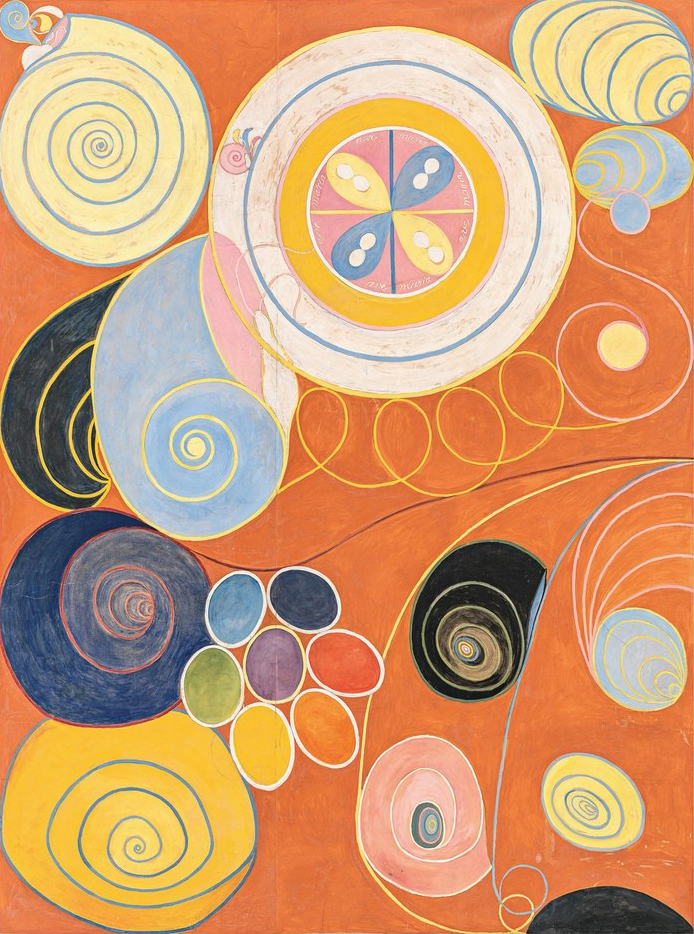In 1906, after 20 years of artistic works, and at the age of 44, Hilma af Klint painted her first series of abstract paintings. The work for the Temple ran between 1906 and 1915, carried out in two phases with an interruption between 1908 and 1912. As Hilma af Klint discovered her new form of visual expression, she developed a new artistic language. Her painting became more autonomous and more intentional. The spiritual would however continue being the main source of creativity throughout the rest of her life.
The collection for the Temple counts in total 193 paintings, grouped in several sub-series. The major paintings, dated 1907, are extremely large in size: each painting measures approximately 240 x 320 cm. This series, called The Ten Largest, describes the different phases in life, from early childhood to old age.
Quite apart from their diagrammatic purpose the paintings have a freshness and a modern aesthetic of tentative line and hastily captured image: a segmented circle, a helix bisected and divided into a spectrum of lightly painted colors. The artistic world of Hilma af Klint is impregnated with symbols, letters and words. The paintings often depict symmetrical dualities, or reciprocities : up and down, in and out, earthly and esoteric, male and female, good and evil. The colour choice is throughout metaphorical: blue stands for the female spirit, yellow for the male one, and pink / red for physical / spiritual love. The Swan and the Dove, names of two series of the Paintings for the Temple, are also symbolic, representing respectively transcendence and love. As gates to other dimensions, her paintings call for interpretation on a narrative, esoteric and artistic level while evoking primordial geometry and humanistic motifs.
When Hilma af Klint had completed the works for the Temple, the spiritual guidance ended. However, she pursued abstract painting, now independently from any external influence. If the paintings for the Temple were mostly oil paintings, she now also used watercolors. Her later paintings are significantly smaller in size. She painted among others a series depicting the stand-points of different religions at various stages in history, as well as representations of the duality between the physical being and its equivalence on an esoteric level. As Hilma af Klint pursued her artistic and esoteric research, it is possible to perceive a certain inspiration from the artistic theories developed by the Anthroposophical Society from 1920 onward.
All through her life, Hilma af Klint would seek to understand the mysteries that she had come in contact with through her work. She produced more than 150 notebooks with her thoughts and studies.



